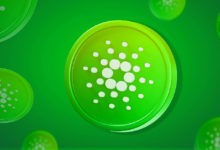Terra Classic Developer Unveils Upcoming AI-powered App Chain

- Edward Kim, the project’s primary developer, published screenshots of the whitepaper.
- A user must first deposit actual LUNC tokens to a unique burn address to get access.
Many people are stunned to learn that the Terra Classic chain may soon get its first AI-powered application chain. Edward Kim, the project’s primary developer, published screenshots of the whitepaper for the Block Entropy artificial intelligence chain on Saturday.
Updates for the AI app chain called Block Entropy. Still building. Here is a sneak peak at the white paper that is almost finished. pic.twitter.com/8PneXKqIbl
— Edward Kim (@edk208) April 29, 2023
Even though specifics are currently sketchy. Kim did mention that the TestNet playground, a simulation tool that allows users to test and explore, will be released to the public sometime next month. And will only support a small subset of “machine-learning inference tasks” like AI image diffusion, text language models, and even music generation.
No Free Access
While the white paper in its entirety is scheduled for a near future release. Kim noted that developments in distributed training mechanisms, Python APIs, SNARK verification methods, and additional fine-tuning modules for producing better results would not be released initially but would instead debut in subsequent phases.
However, everyone cannot simply log in and start using TestNet. In order to get access to the TestNet faucet. A user must first deposit actual LUNC tokens to a unique burn address. And then submit the transaction hash into the faucet.
The much-anticipated burn faucet, which Kim claims will be introduced later next month, will be previewed at this event.
If you burn a certain amount of LUNC, you will get a certain number of testnet tokens in exchange. These tokens have no intrinsic value and can only be used for machine-learning experiments. Kim further emphasizes the fact that the development’s crucial Interchain Accounts (ICA) module has been finished and is now being tested on the LUNC L1 TestNet.






 Bitcoin
Bitcoin  Ethereum
Ethereum  Tether
Tether  USDC
USDC  TRON
TRON  Dogecoin
Dogecoin  Cardano
Cardano  Bitcoin Cash
Bitcoin Cash  Chainlink
Chainlink  LEO Token
LEO Token  Stellar
Stellar  Zcash
Zcash  Monero
Monero  Litecoin
Litecoin  Hedera
Hedera  Dai
Dai  Cronos
Cronos  OKB
OKB  Tether Gold
Tether Gold  Ethereum Classic
Ethereum Classic  KuCoin
KuCoin  Gate
Gate  Algorand
Algorand  Cosmos Hub
Cosmos Hub  VeChain
VeChain  Dash
Dash  Tezos
Tezos  Stacks
Stacks  TrueUSD
TrueUSD  IOTA
IOTA  Basic Attention
Basic Attention  Decred
Decred  Theta Network
Theta Network  NEO
NEO  Synthetix
Synthetix  Qtum
Qtum  Ravencoin
Ravencoin  0x Protocol
0x Protocol  DigiByte
DigiByte  Zilliqa
Zilliqa  Nano
Nano  Numeraire
Numeraire  Siacoin
Siacoin  Waves
Waves  Ontology
Ontology  Enjin Coin
Enjin Coin  Status
Status  BUSD
BUSD  Pax Dollar
Pax Dollar  Hive
Hive  Lisk
Lisk  Steem
Steem  Huobi
Huobi  OMG Network
OMG Network  NEM
NEM  Augur
Augur  Bitcoin Gold
Bitcoin Gold  Ren
Ren  Bitcoin Diamond
Bitcoin Diamond